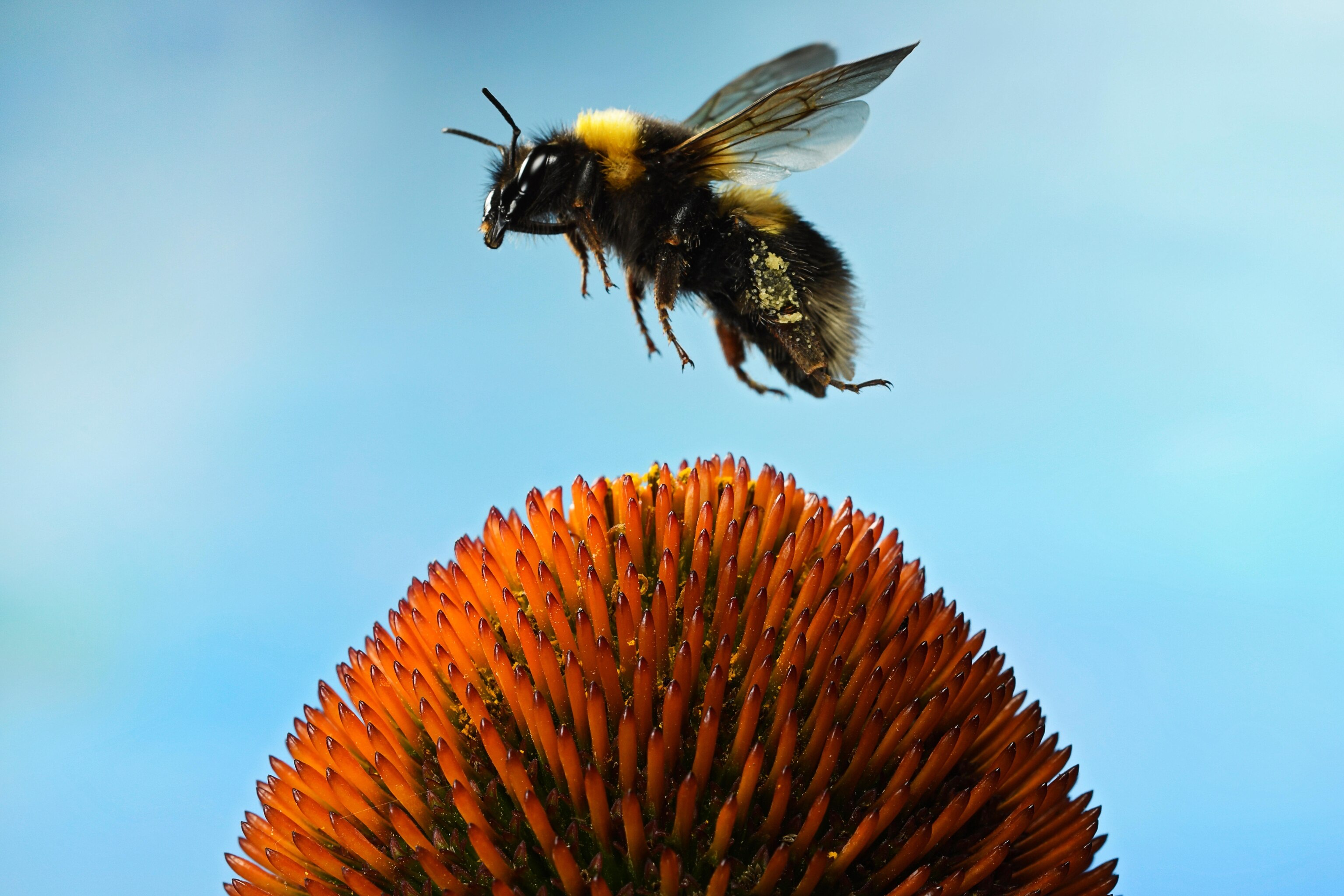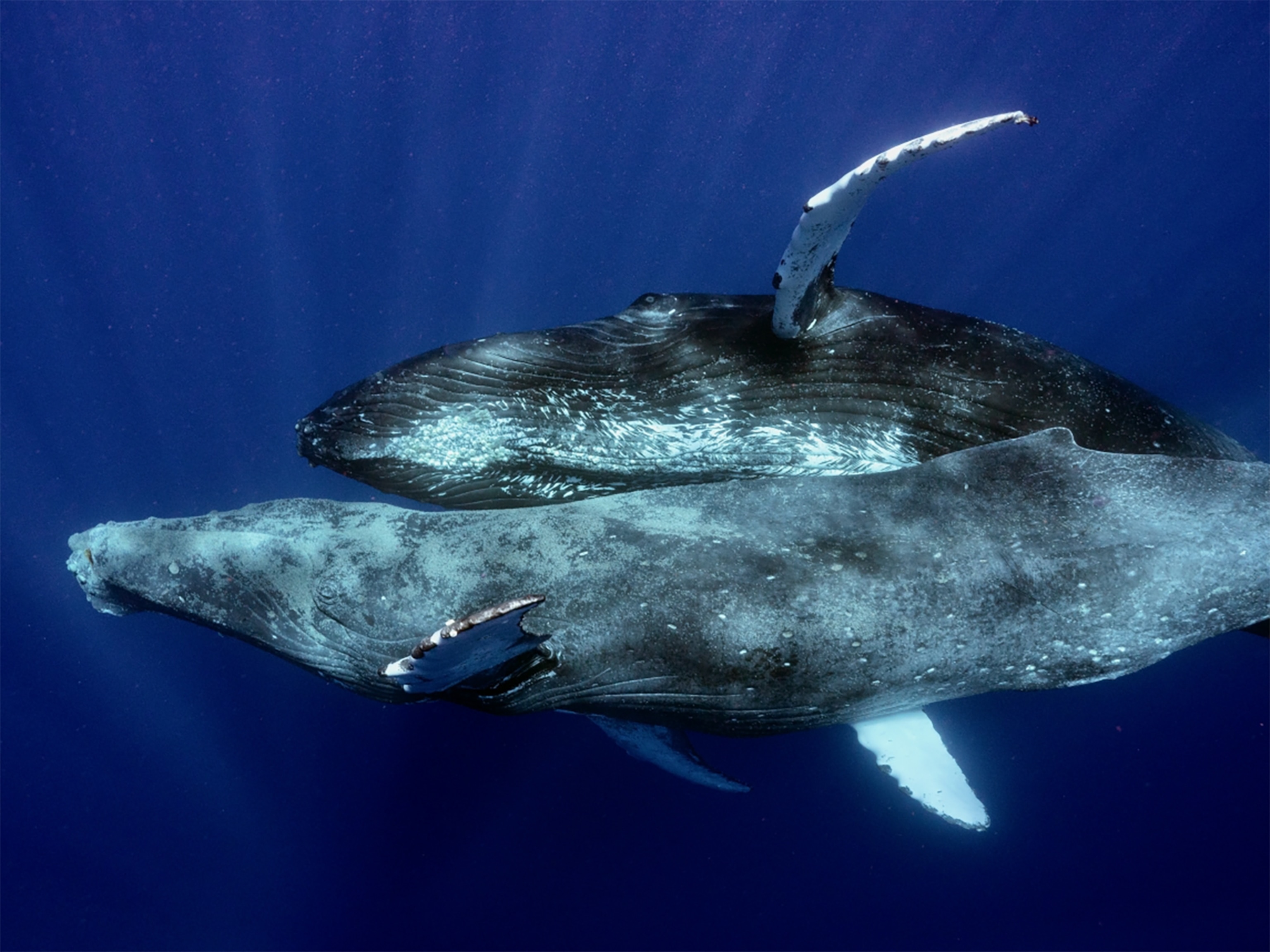
Do bees play? A groundbreaking study says yes.
Insects’ lives may be richer and more complex than previously thought.
Many animals like to play, often for no other apparent reason than enjoyment. Pet owners know this is true for cats, dogs, even rodents—and scientists have observed the same in some fish, frogs, lizards, and birds. But what about insects? Are their minds and lives rich enough to make room for play?
New research published in the journal Animal Behaviour suggests that bumblebees seem to enjoy rolling around wooden balls, without being trained or receiving rewards—presumably just because it’s fun.
“It shows that bees are not little robots that just respond to stimuli… and they do carry out activities that might be pleasurable,” says lead author Samadi Galpayage, a researcher at the Queen Mary University of London.
These findings add to growing evidence that bees are more complex than previously thought. If they’re playing solely for fun, enjoyment, and pleasure, that also raises important questions about what feelings they experience—and if they can be considered sentient.
Having a ball
Buff-tailed bumblebees (Bombus terrestris audax) are one of the most common species of bumblebees in Europe, often found in parks, gardens, and used to pollinate greenhouses. Yet, these fuzzy, buzzing insects are known to science as tiny social creatures with surprisingly expansive cognitive abilities. In 2017, scientists at the Queen Mary University of London conducted research showing that bees can also be taught to play soccer, scoring a goal with small wooden balls in return for a reward.
During this project the scholars realized some of the bumblebees on the sidelines seemed to enjoy rolling around the balls, for no obvious reason or benefit. To test the hypothesis that the bees were doing this for fun, Galpayage carried out a couple of experiments. In one, 45 bumblebees were placed in an arena connected to a separate feeding area by a path surrounded by 18 colorful wooden balls. The route was unobstructed, but the bees could deviate from their lane and interact with the yellow, purple, and plain wooden balls, over the course of three hours every day, for 18 days. The balls were glued to the ground on one side of the path, and were mobile on the other.
The bees, which were tagged according to age and gender, preferred the area with mobile balls. And they made the most of it. On several occasions, they were recorded rolling the balls around the arena floor with their bodies. Some bees did this only once, others rolled balls 44 times during a single day, and one did so a whopping 117 times over the course of the study.
The fact that the bees continue to return to the balls and roll them “suggests that there’s something rewarding about it,” says Galpayage, who notes that there are hints of this being play behavior because the data gathered matches trends found in other research on the subject. Male bees seem to play with the balls longer than females do, a pattern found in similar studies of vertebrates at play. Juvenile bees, younger than three days old, also rolled the balls more than the bees older than 10 days of age. This too is in line with findings from the rest of the animal world.
“More play in younger individuals could be linked to preparing individuals for the world they find themselves in,” says Elizabeth Franklin, a behavioral ecologist specializing in social insects at Cornwall College Newquay, who was not involved in the study.
The rules of play
According to scientific criteria developed in part by Gordon Burghardt, an ethology researcher at the University of Tennessee, play should be voluntary, spontaneous, or rewarding in and of itself. The act of “playing” is a behavior that doesn’t have any immediately obvious functionality such as obtaining food, finding shelter, or mating.
This paper includes one of the “best experiments” about animal play because it carefully tested all these metrics, says Burghardt, who wasn’t involved in this study.

For instance, in this experiment, ball rolling never resulted in the provision of food. The bees’ nectar and pollen could be easily accessed in a separate room without ever having to interact with the balls. The bees never attempted to bite or extend their proboscis toward the balls in search of a sugary reward. Plus, most importantly, they came back to roll the ball one additional day or two different additional days even after foraging. (In nature, bees can be observed to stray away from the flowers that no longer give them a sugary reward.)
The bees didn’t ever show their genitalia, suggesting that there were no attempts at mating—and they rolled the balls in all directions, indicating that they weren’t trying to declutter their living space, as they sometimes do.
“I think that it is amazing when you see the little bee on the ball,” Burhardt says, laughing. “If you saw this in another animal, you would have no problem calling it play.”
That buzzing feeling
Burhardt believes that play is a complex set of behaviors that has evolved independently in many animals and that may have multiple functions for their development.
Creatures whose lives require fine-tuned motor skills to get their food are more likely to play with objects, according to research on non-human primates, and bumblebees do employ some impressive moves to pry open flowers and extract nectar and pollen, getting better over time.
In this specific experiment, the bumblebees didn’t show any improvement in their ball-handling abilities and didn’t, for example, get quicker at ball-rolling—yet another suggestion they’re doing it just for enjoyment. But future research could investigate whether bumblebees who roll balls around more frequently are more dexterous in their flower-handling.
Nevertheless, scholars remain divided as to whether “playing” as such has long-term adaptive benefits.
“That’s the million dollar question, and it’s not for lack of trying,” says Wolf-Dietmar Hütteroth, a researcher at Leipzig University in Germany who studies fruit fly behavior and was not involved in this research. “Why do they do it and what’s the benefit? What’s the adaptive value of the behavior?”
If the only reason for play is enjoyment, this means scientists have to start asking real questions about whether insects have feelings, and therefore whether they are sentient.
“I think the evidence is quite clear and yes, it points to a much richer world of feelings, of capabilities, not just to suffer but also to enjoy things,” says Lars Chittka, head of the bee-research laboratory at Queen Mary University and author of the book The Mind of a Bee.
Research has also shown that fruit flies get scared and crayfish get anxious, and investigating play can widen the scope of how we understand insect cognition. In fact, these findings add to previous research by Chittka’s lab which had already demonstrated that bumblebees can experience something like positive emotions and optimism: A sugary treat can change bees’ emotional state in a positive way, making them pursue a reward more quickly, or more rapidly recover from a scare.
“It’s very humbling, it indicates that we as humans are only one of many thinking and enjoying suffering beings out there,” Chittka says.
Related Topics
You May Also Like
Go Further
Animals
- This ‘saber-toothed’ salmon wasn’t quite what we thoughtThis ‘saber-toothed’ salmon wasn’t quite what we thought
- Why this rhino-zebra friendship makes perfect senseWhy this rhino-zebra friendship makes perfect sense
- When did bioluminescence evolve? It’s older than we thought.When did bioluminescence evolve? It’s older than we thought.
- Soy, skim … spider. Are any of these technically milk?Soy, skim … spider. Are any of these technically milk?
- This pristine piece of the Amazon shows nature’s resilienceThis pristine piece of the Amazon shows nature’s resilience
Environment
- This pristine piece of the Amazon shows nature’s resilienceThis pristine piece of the Amazon shows nature’s resilience
- Listen to 30 years of climate change transformed into haunting musicListen to 30 years of climate change transformed into haunting music
- This ancient society tried to stop El Niño—with child sacrificeThis ancient society tried to stop El Niño—with child sacrifice
- U.S. plans to clean its drinking water. What does that mean?U.S. plans to clean its drinking water. What does that mean?
History & Culture
- Séances at the White House? Why these first ladies turned to the occultSéances at the White House? Why these first ladies turned to the occult
- Gambling is everywhere now. When is that a problem?Gambling is everywhere now. When is that a problem?
- Beauty is pain—at least it was in 17th-century SpainBeauty is pain—at least it was in 17th-century Spain
- The real spies who inspired ‘The Ministry of Ungentlemanly Warfare’The real spies who inspired ‘The Ministry of Ungentlemanly Warfare’
- Heard of Zoroastrianism? The religion still has fervent followersHeard of Zoroastrianism? The religion still has fervent followers
Science
- Here's how astronomers found one of the rarest phenomenons in spaceHere's how astronomers found one of the rarest phenomenons in space
- Not an extrovert or introvert? There’s a word for that.Not an extrovert or introvert? There’s a word for that.
- NASA has a plan to clean up space junk—but is going green enough?NASA has a plan to clean up space junk—but is going green enough?
- Soy, skim … spider. Are any of these technically milk?Soy, skim … spider. Are any of these technically milk?
- Can aspirin help protect against colorectal cancers?Can aspirin help protect against colorectal cancers?
Travel
- What it's like to hike the Camino del Mayab in MexicoWhat it's like to hike the Camino del Mayab in Mexico
- Follow in the footsteps of Robin Hood in Sherwood ForestFollow in the footsteps of Robin Hood in Sherwood Forest
- This chef is taking Indian cuisine in a bold new directionThis chef is taking Indian cuisine in a bold new direction
- On the path of Latin America's greatest wildlife migrationOn the path of Latin America's greatest wildlife migration
- Everything you need to know about Everglades National ParkEverything you need to know about Everglades National Park







